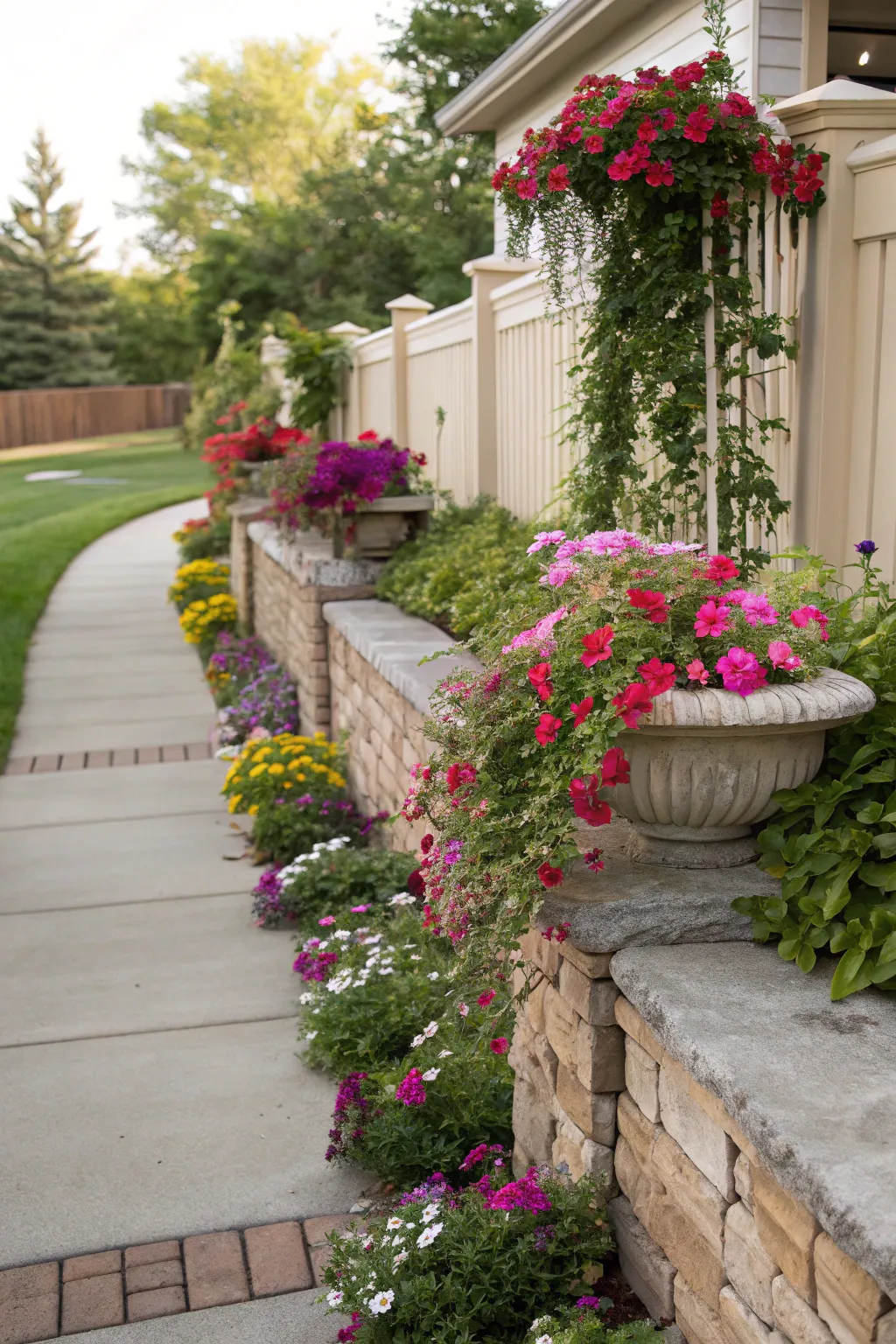A charming front yard doesn’t have to be a grand affair. Sometimes, the magic is in the smallest changes—and a thoughtfully arranged flower bed is a perfect place to begin.
Let me assure you: you don’t need to be a professional gardener to create curb appeal that turns heads. With just a handful of well-chosen plants and a dash of creativity, you’ll have neighbors stopping to smell your roses (or peonies, or petunias!).
1. Color Pops! Annuals That Change with Every Season

There’s nothing quite like the joy of annuals dazzling a flower bed. Each year, you get to reinvent your front yard with new colors and fresh energy. One season it’s a sea of pinks and oranges, the next it’s cool blues and snowy whites—seasonal color at its finest!
Think beyond the basics! Here are a few creative ways I love to work annuals into a design:
- Create a living border with cheerful marigolds or dusty miller.
- Fill in gaps between shrubs with bold petunias for dramatic contrast.
- Highlight an entry path by tucking impatiens along the edges for a welcoming look.
- Try a monochromatic scheme—think all shades of purple—for a fun, modern twist.
Last summer, I helped Sarah (a retired teacher with a love for surprises) swap out her bed of tulips for a carnival-colored spread of zinnias and cosmos. That simple change made her smile every time she walked outside.
Change up your palette each year—it keeps your garden, and your spirits, blooming!
A few helpful options:
2. The Power of Crisp Edges
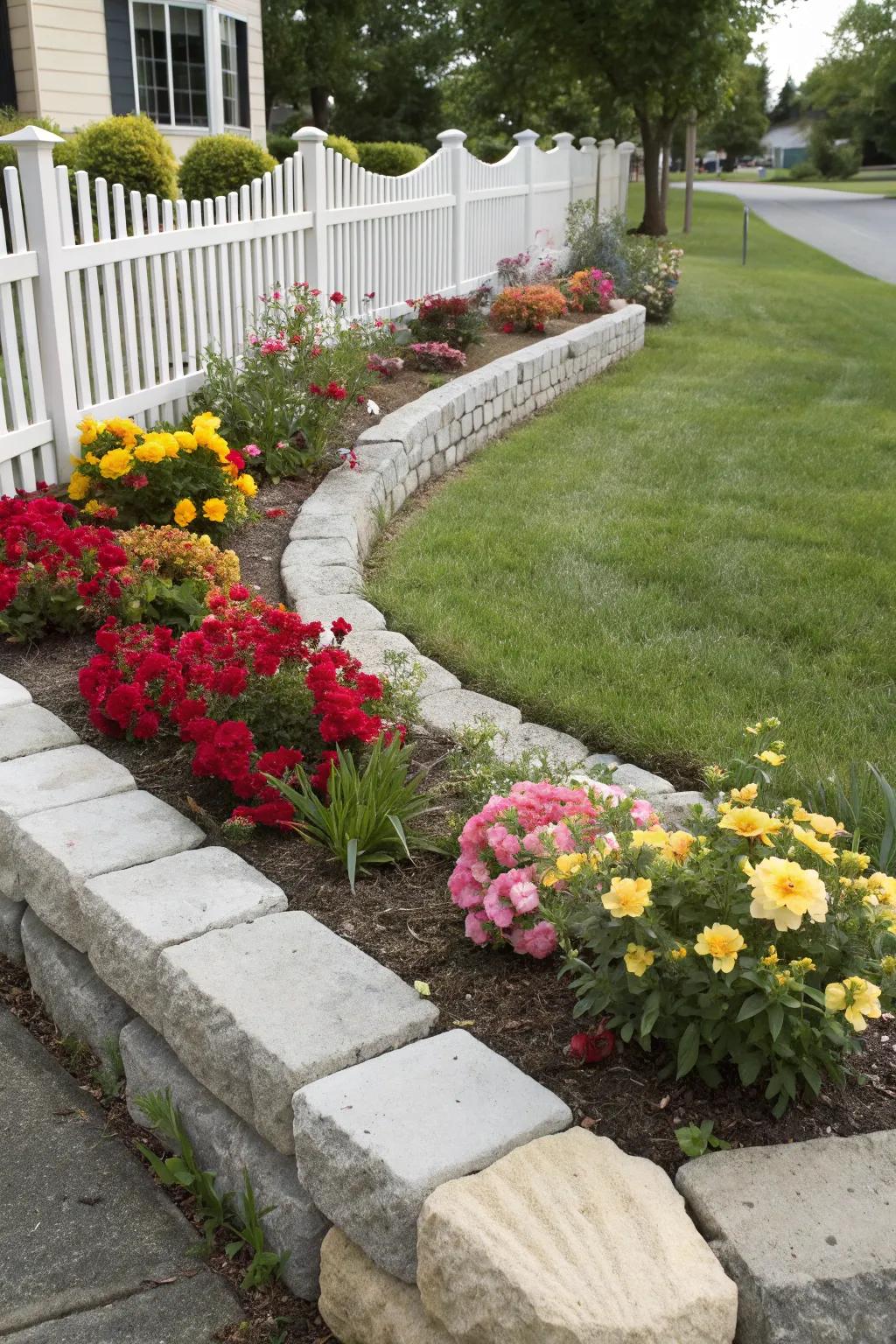
Ever notice how a tidy border can transform even the simplest flower bed into something special? Defined edges are more than just neat lines—they’re the unsung heroes of front yard style, giving your garden a sense of intention. Have you ever wondered why some yards look so put together, even with minimal planting? It’s all in the details.
Here’s how you can achieve that polished look:
- Use natural stones for a rustic yet refined border that blends easily with plants.
- Opt for bricks if you love symmetry and want a classic, perennial look.
- Choose flexible edging materials to create soft, organic curves or sharp, modern lines—whatever suits your style.
It doesn’t have to be complicated.
One of my favorite projects was with the Martins, a young couple who’d just moved into their first home. They wanted a front flower bed that would look sharp but not fussy. We chose a mix of curved stone and flexible edging to complement their slightly sloped yard—it kept the mulch in, the grass out, and (most importantly!) made them smile every time they pulled in the driveway. It’s amazing how a defined line can make your flowers—and your efforts—stand out.
These products might help:
3. Mix It Up!
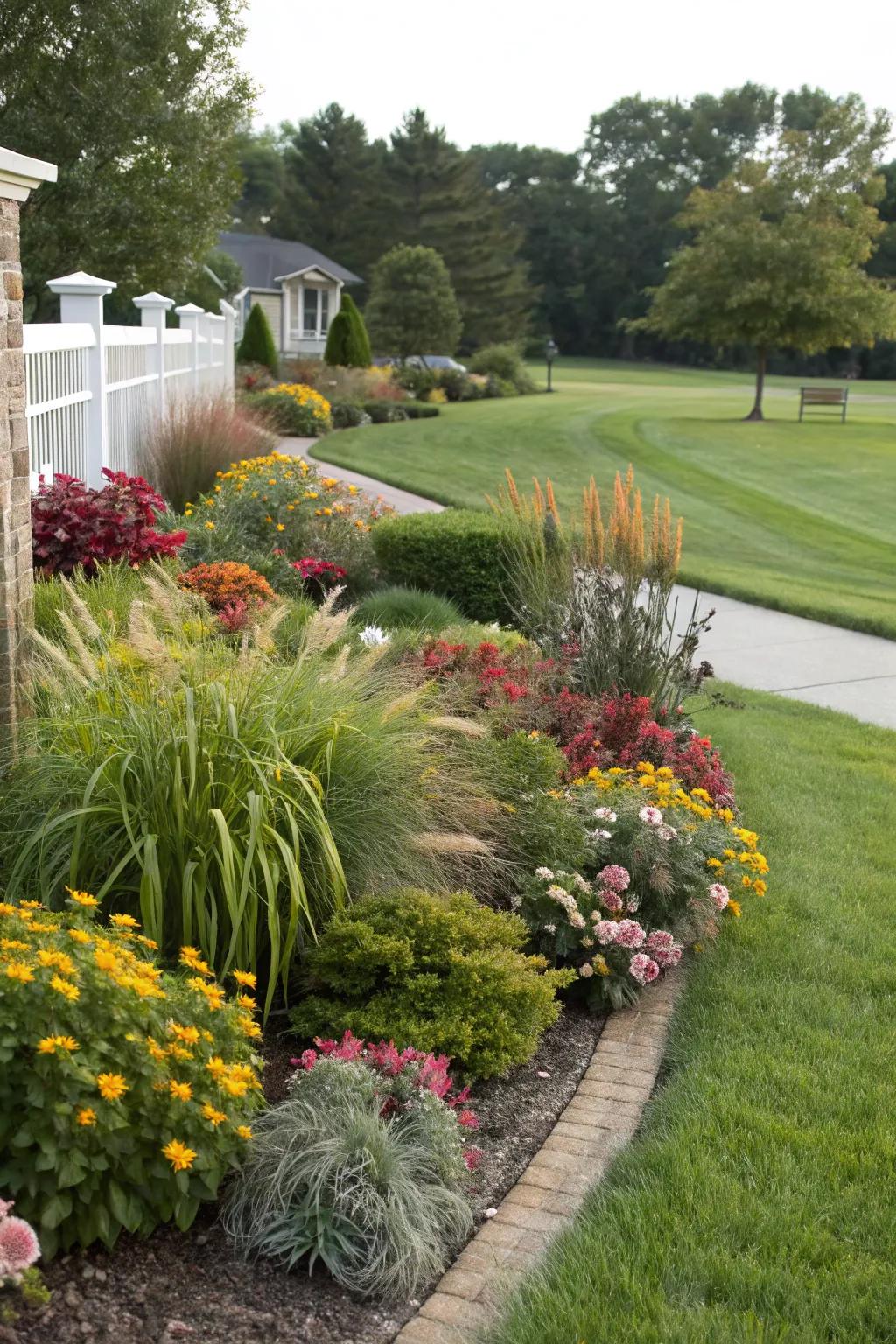
If your flower bed feels a little flat or predictable, it might be time to experiment with mixed planting. Combining perennials, annuals, shrubs, and ornamental grasses can completely change the energy of your front yard. I love using this approach for my clients, especially those who want their yard to look lush with surprises in every season.
Here are some ways to embrace diversity in your beds:
- Plant clusters of bold flowers next to airy grasses for movement and color in the breeze.
- Layer heights by starting with compact groundcovers, followed by medium-size perennials, and finish with a few eye-catching shrubs.
- Choose a variety of leaf shapes and hues, from silvery greens to deep burgundy, for year-round visual interest.
Try stepping back and asking yourself: Does this bed feel too uniform? Sometimes just adding one unexpected plant can spark the transformation. The most memorable beds I’ve designed for clients always celebrate a little bit of wildness and a lot of personality.
A few relevant products:
4. Balancing Your Flower Bed: Every Garden’s Secret Harmony
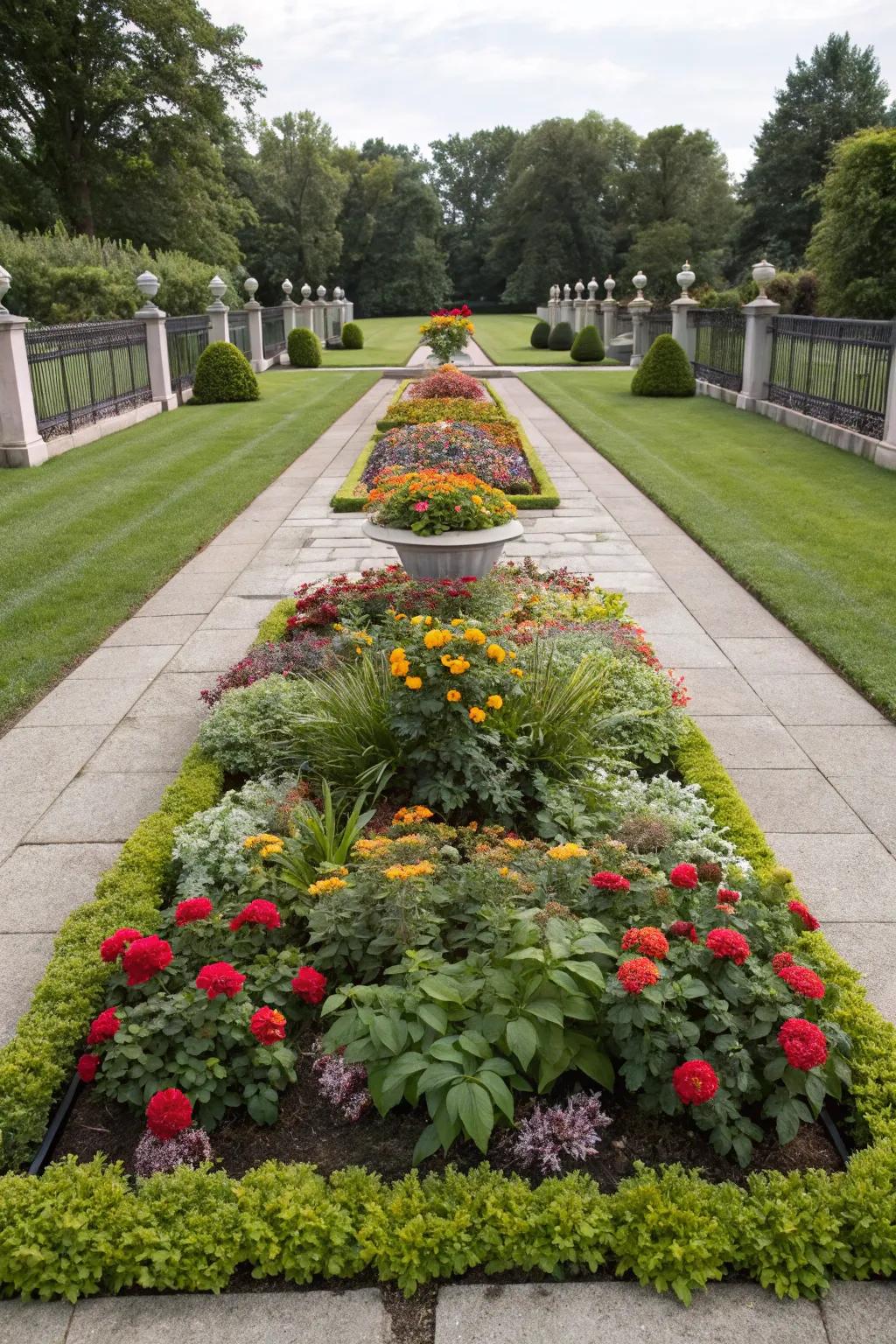
When you design with symmetry and balance in mind, you’re giving your front yard flower beds a natural sense of order and grace. Think of it as creating visual anchors—the kind of arrangement that feels just right, even if you can’t quite say why. It’s like putting all your eggs in just the right baskets.
A little symmetry goes a long way in bringing peace and structure to your entry, setting the stage for a welcoming, harmonious home.
You might like:
5. Effortless Beauty Always
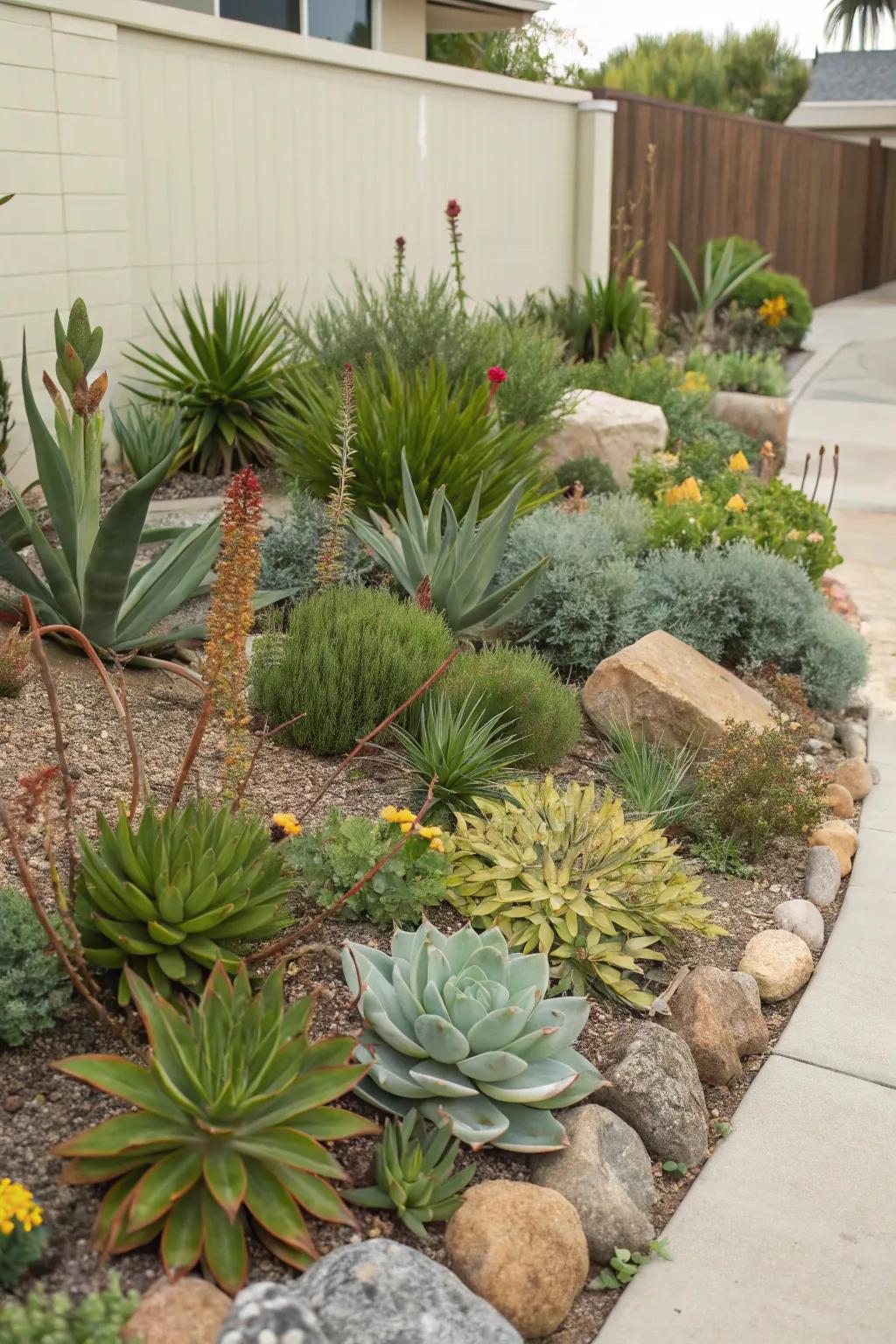
If you’d rather be sipping lemonade than fussing with finicky flowers, I completely get it.
Some of the most stunning beds I’ve helped create are filled with hardy succulents and native perennials—plants that almost thrive on neglect. Let your garden lighten the load, not add to it!
You might give these a try:
6. Mastering Layers: Give Your Flowers True Depth and Drama
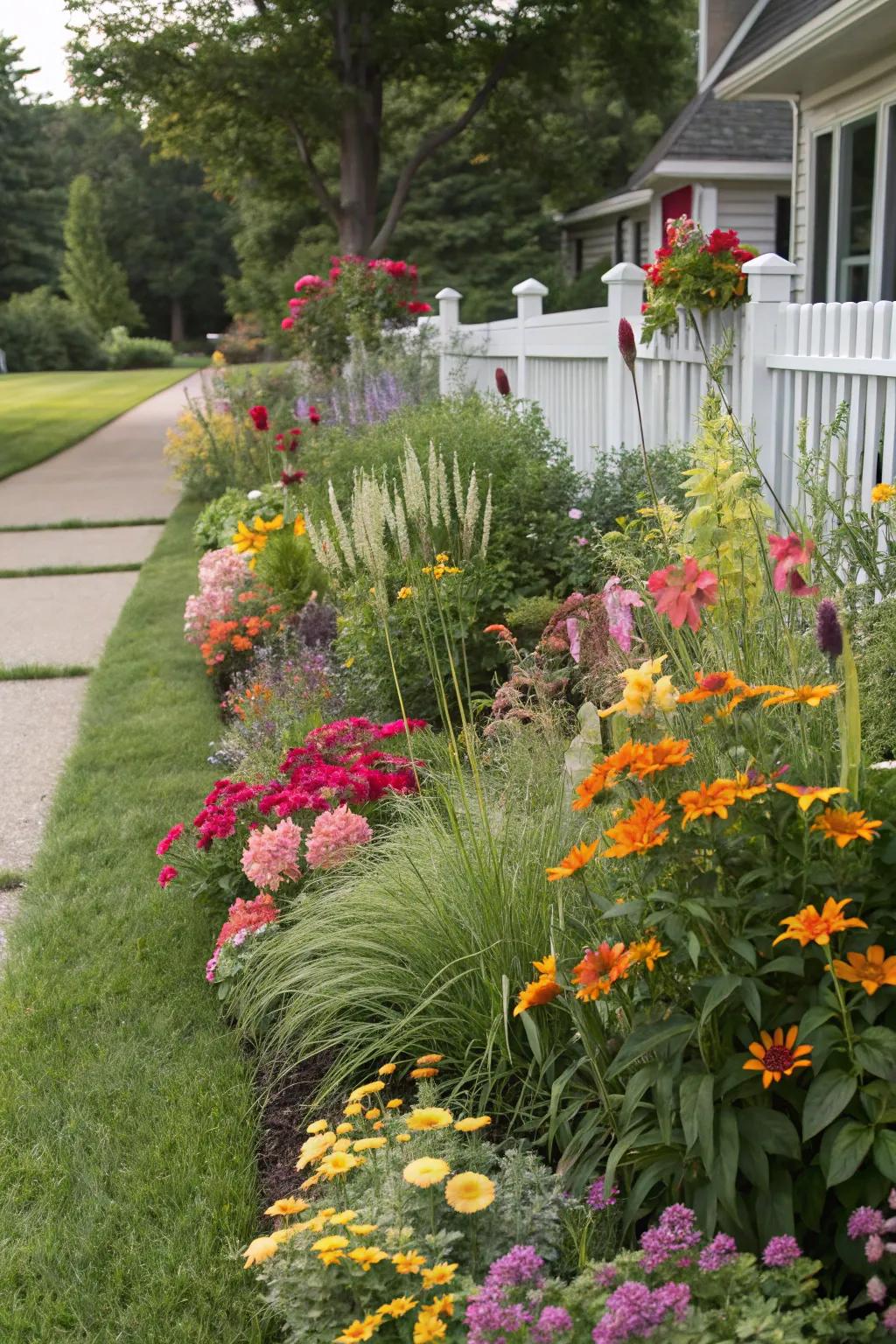
Picture this: you step onto the path to your front door and, instead of seeing a flat row of color, you’re greeted by a living tapestry—tall, graceful blooms arching at the back, with lush mid-level fillers and a carpet of cheerful groundcovers spilling at your feet. That’s the magic of layered planting, and it’s a technique that can turn the smallest plot into a scene straight out of a magazine.
Layered planting isn’t just about looks, though. It gives a sense of abundance and intentionality to your garden design. When clients ask me how to add interest to their flower beds—especially those with limited space—I always start here. I once worked with Alan, who struggled with a very narrow front border. Together, we used layers to transform the narrow space: we chose tall salvia and foxglove for the back, compact daisies and asters for the middle, and a cheerful border of creeping thyme at the front. Now, his walkway feels like a journey, not just a shortcut!
To start layering like a pro, consider:
- Begin with a bold “back row” using tall spiky flowers or ornamental grasses.
- Fill the middle with bushier, medium-height plants that offer contrast in texture or leaf shape.
- Edge the front with colorful groundcovers or low-growing annuals for a soft, inviting look.
- Repeat colors or flower types in small groups to create harmony (think in threes and fives for a natural look).
Isn’t it wonderful how drawing the eye upward and downward creates movement and drama? Try standing out on your curb and imagining your own flower “waves”—the right layers can make your whole yard feel alive.
Sometimes, a little depth goes a long way.
Possibly helpful picks:
7. What Makes a Circular Bed Pop?
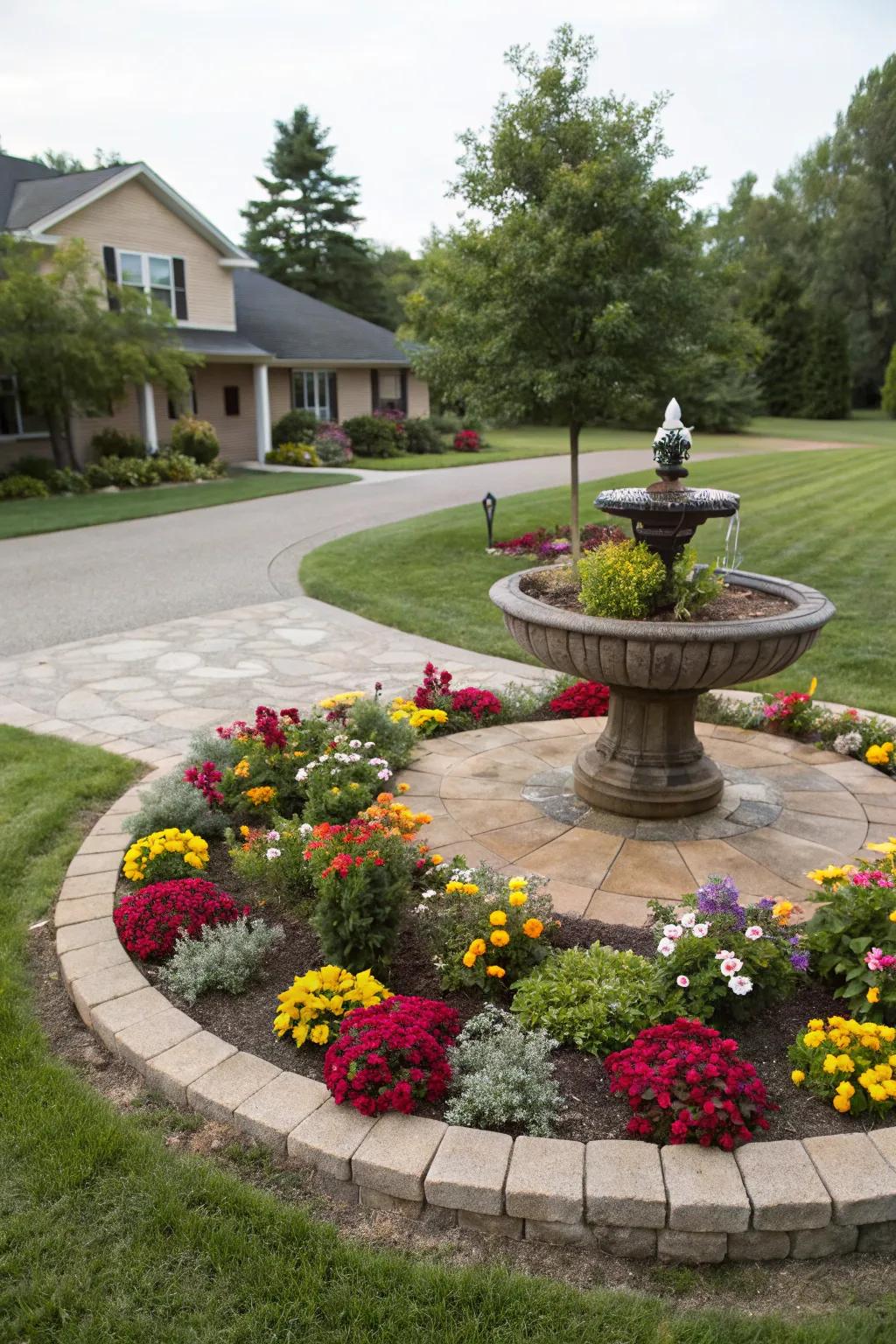
Circular flower beds are like invitations—drawing you in and making you linger. I always recommend placing something special at the center: it instantly creates a cozy, friendly mood. The shape itself feels welcoming, and a clever focal point gives your yard structure without fuss.
Try one of these classic centerpieces to anchor your design:
- Outdoor garden fountain: Perfect for small spaces.
- Ceramic tiered fountain: Adds an elegant touch.
- Solar-powered water feature: Eco-friendly option.
Plant lower-growing flowers around the edges and fill in with textured greenery.
Sometimes less really is more!
Might be a good match:
8. Which Colors Make a Garden Pop?
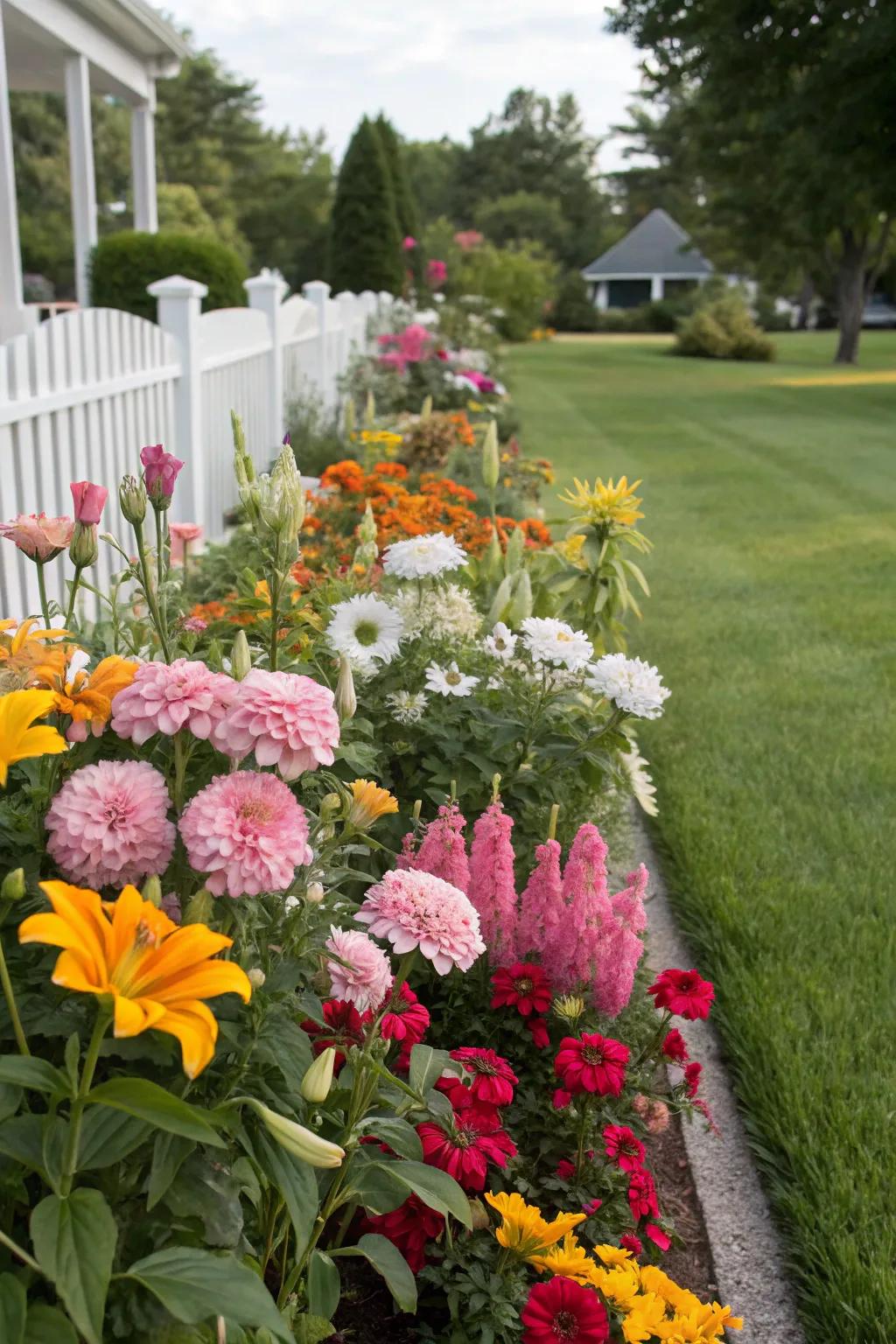
Color truly is the soul of your garden. A vibrant front yard can lift your mood, welcome guests with warmth, and create personality before anyone even steps inside.
If you want lively, ever-changing color, here’s what I recommend:
- Mix perennial flowers for continuous, reliable blossoms year after year.
- Add annuals for a fresh burst of new color every season—shift them around as your tastes (and weather!) change.
The right pairing brings your garden to life, season after season.
Possibly handy products:
9. Inviting the Senses: Why Every Garden Loves Herbs
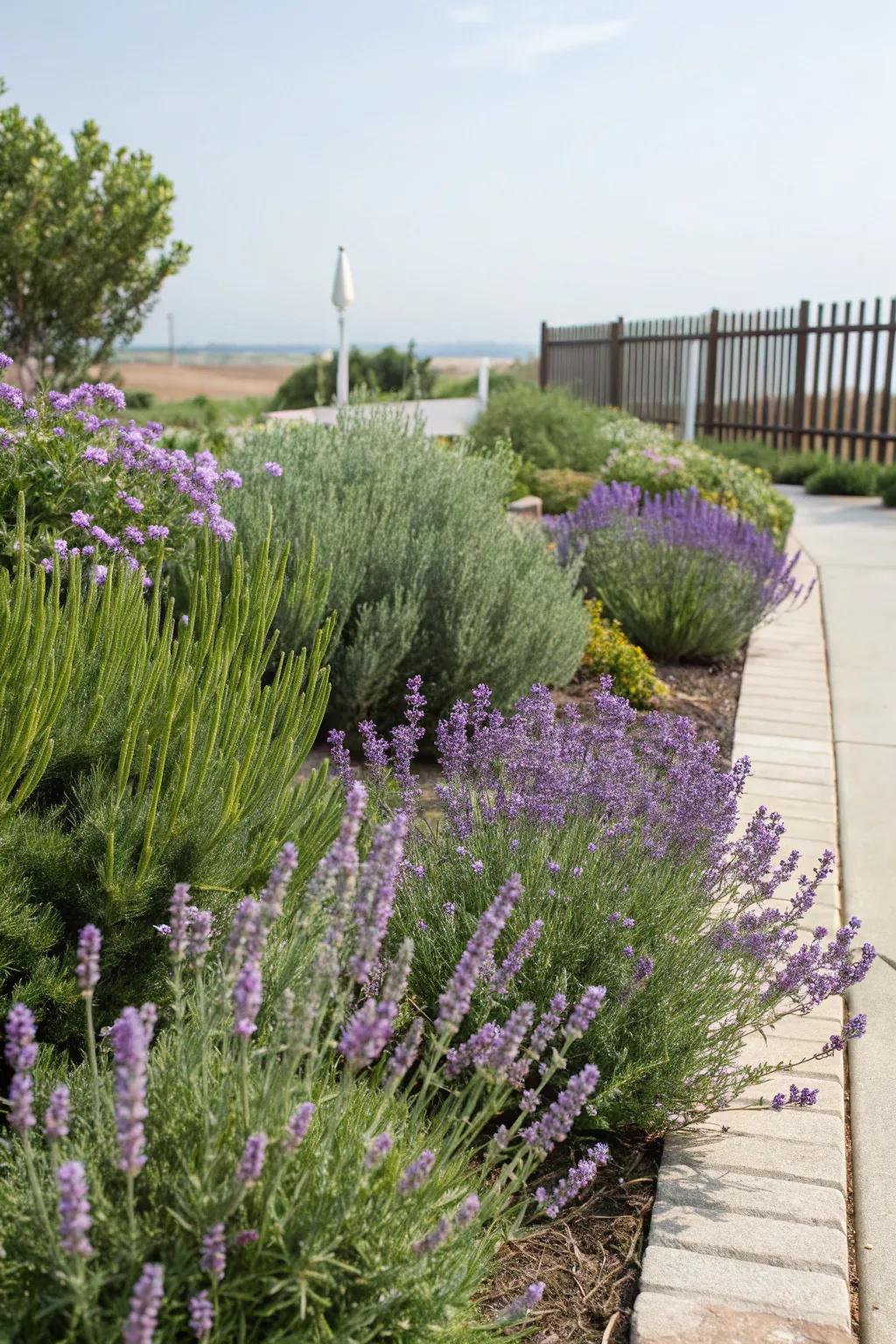
Herb gardens are pure magic for the senses. The earthy aroma of rosemary, the gentle sweetness of lavender drifting on the breeze—these plants don’t just add green to your flower bed, they create experiences every time you brush past.
Imagine… sipping tea on a quiet morning, enveloped by the soft perfume of your own little patch of lemon thyme and basil.
When working with clients, I always encourage weaving edible herbs right into the flower bed design. Not sure where to start? Here are three simple ways to incorporate herbs for both beauty and practicality:
- Mix low-growing herbs like thyme at the front of your bed for delicate groundcover and surprise fragrance.
- Tuck sturdy, upright herbs like rosemary or sage in the back for structure and drama.
- Include one or two show-stopping herbs—lavender is a classic—that offer blooms as well as scent and culinary benefits.
I still remember working with the Harrisons, who wanted a garden as lovely to smell as it was to see. We tucked fragrant marjoram along their walkway and added a playful patch of chives near the entry. It became their favorite spot to gather herbs for the evening’s meal, and visitors always remarked on the inviting scent.
Have you ever wondered what fresh-picked oregano could do for your summer salad—or your outdoor atmosphere? Trust me, even a handful of herbs can transform your front flower bed from pretty to truly unforgettable.
These products might be useful:
10. Rock Gardens: Effortless Texture, Timeless Appeal
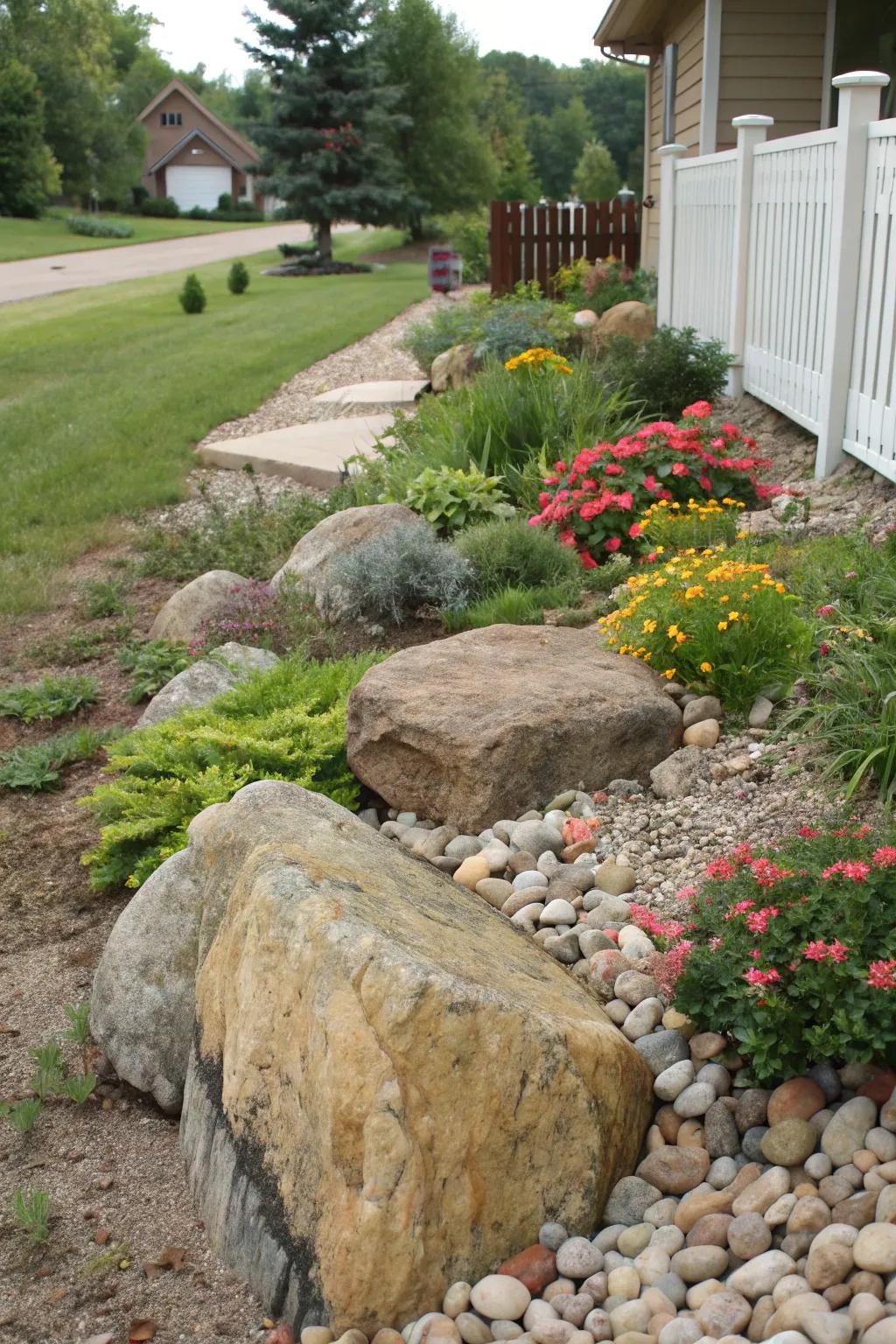
Sometimes, less really is more. When I want to add dimension without fuss, rock gardens are my go-to trick for instant texture and sculptural charm.
Here’s the secret: choose rocks in a mixture of sizes and cluster them thoughtfully among your plants. Not only do they look amazing, they cut down on weeding and watering—talk about a win-win! Try it and see how even a handful of stones can turn your garden into a masterpiece.
May just do the trick:
11. Rustic Roots!
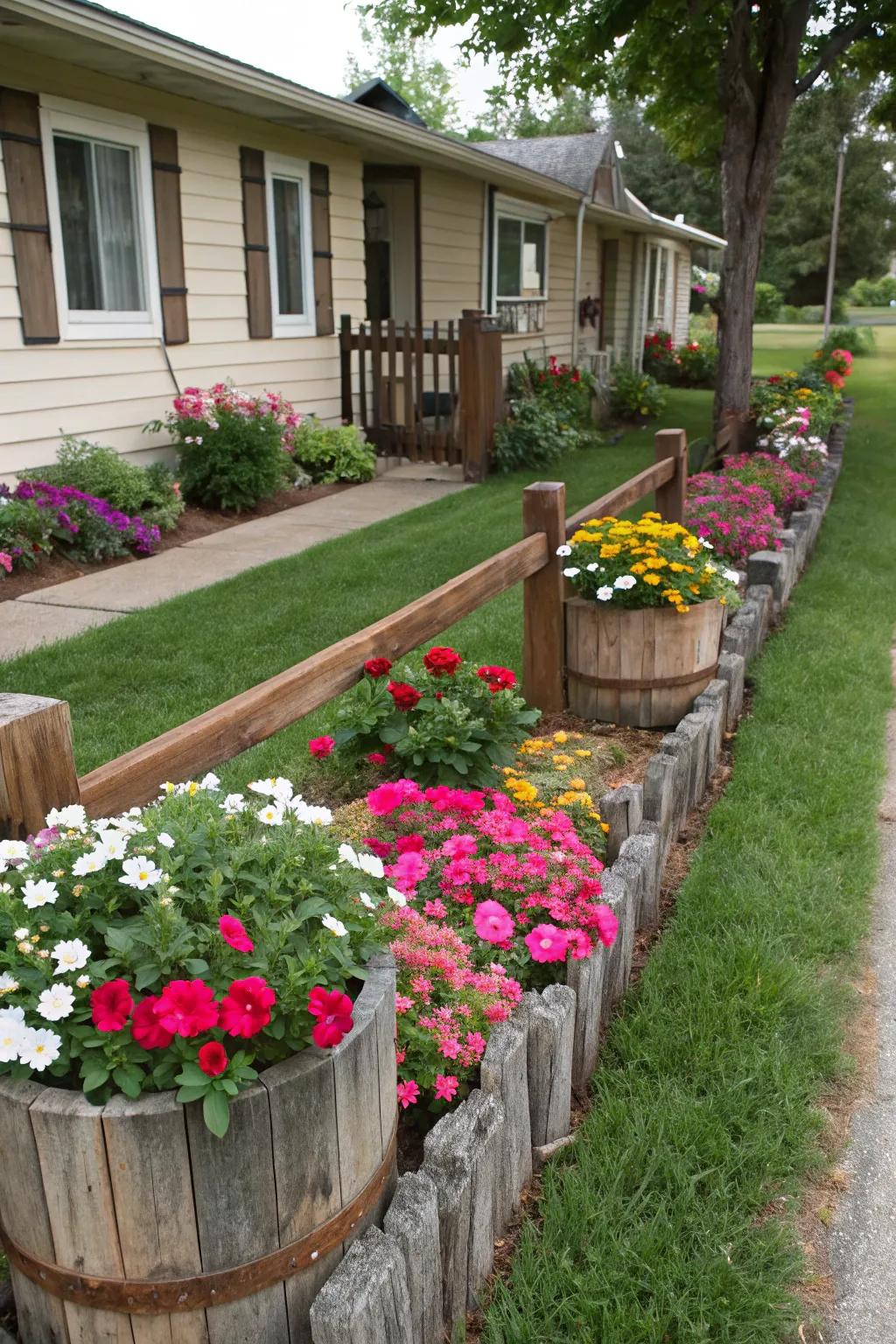
Nothing says down-to-earth charm like weathered barrels, sturdy logs, or wooden edging in your flower bed. These simple wooden touches are the secret ingredient for a yard that feels warm, welcoming, and full of nostalgic countryside character.
End every day with a smile, right in your own rustic retreat.
Check if these fit your needs:
12. Native Plants: The Easy, Eco-Friendly Way to Boost Beauty and Biodiversity
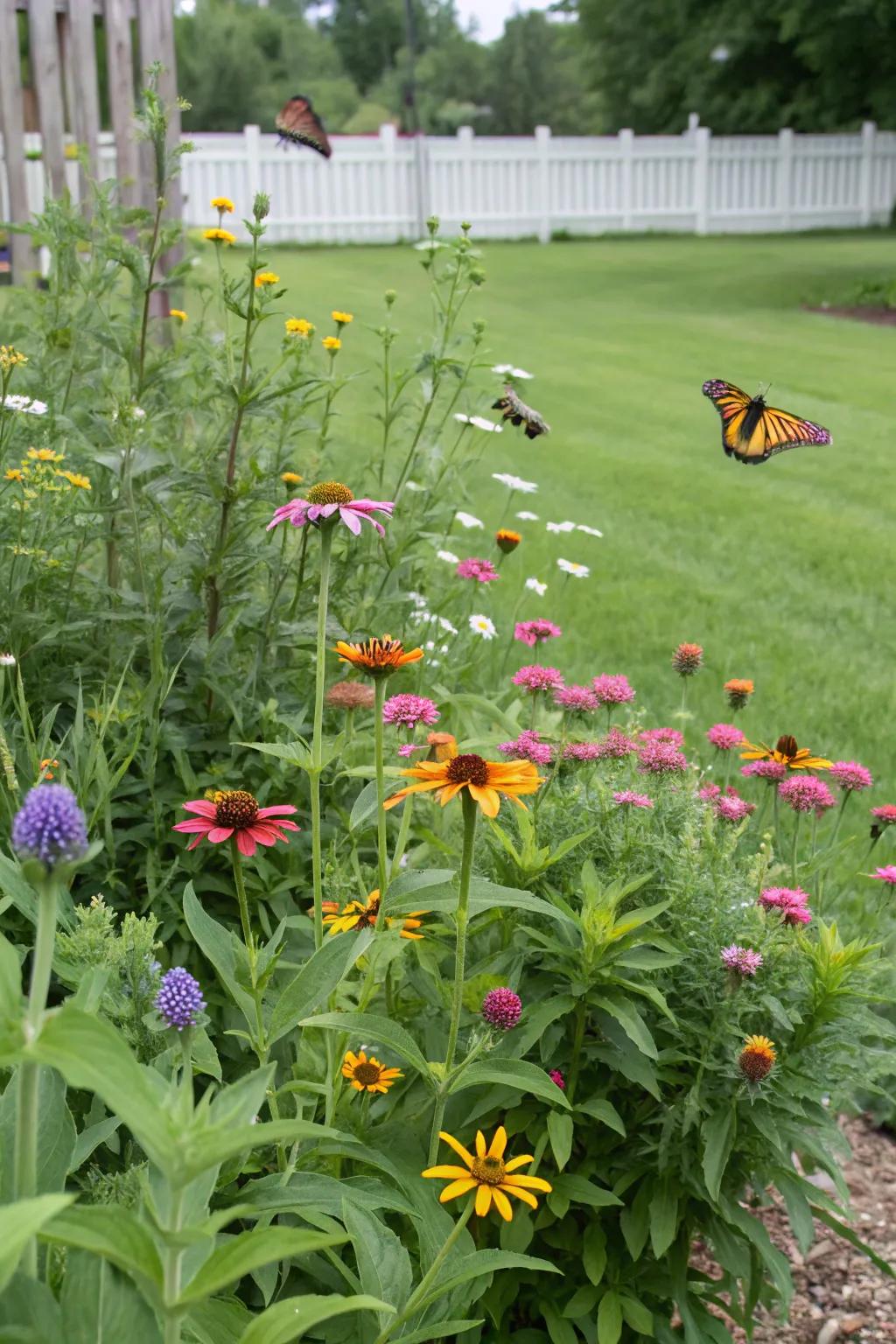
Native plant beds are more than just a gardening trend—they’re a lifeline for bees, butterflies, and birds in your neighborhood. By using species that thrive naturally in your area, you create a resilient garden that flourishes with minimal fuss, conserves water, and helps restore balance to the local ecosystem. Isn’t it marvelous to know your flower bed is doing double duty: gorgeous and good for the planet?
I remember working with Anna, one of my enthusiastic clients, who wanted a vibrant front yard but had little time for hands-on maintenance. When we filled her garden with local wildflowers and native grasses, not only did her beds become practically self-sufficient, but the butterflies danced in the breeze every morning. Her neighbors often stopped by to ask how she got so many pollinators to visit—Anna just smiled and said it was all about working with nature, not against it.
Want to get started? It’s easier than you think:
- Research the best native flowering plants for your climate and soil.
- Group plants with similar light and water needs together for a natural look.
- Add mulch to protect roots and support healthy soil life.
From there, let nature take the lead. Your effort will ripple out, creating a lasting haven for wildlife, and a distinctive, low-maintenance garden you can be proud of.
A few suggestions:
13. Whimsical Cottage Garden
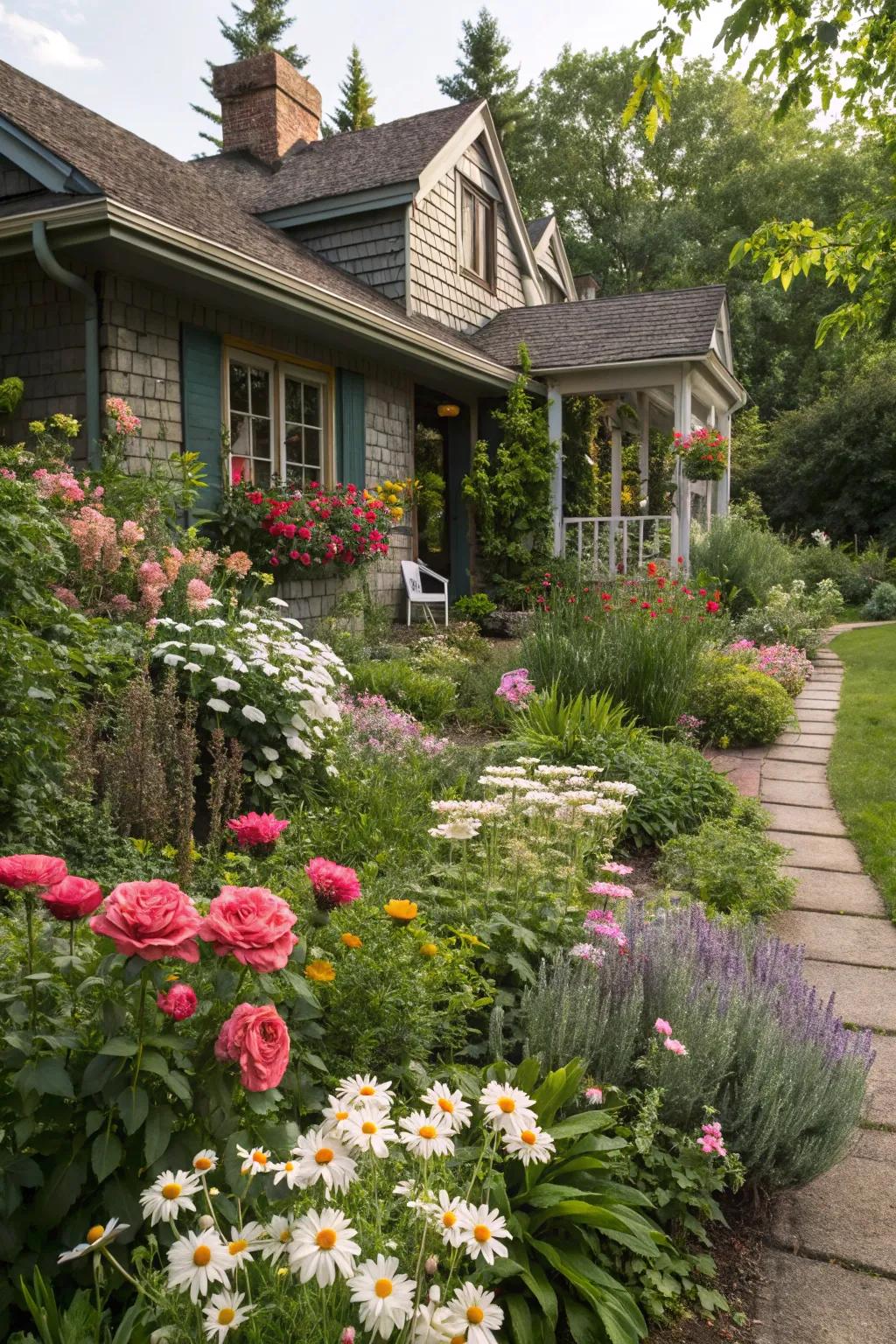
Create a whimsical look with a cottage garden, mixing diverse flowers and textures. This style, reminiscent of my visits to English gardens, adds a charming, unstructured beauty.
Explore these options:
14. Where Do Your Pathways Lead?
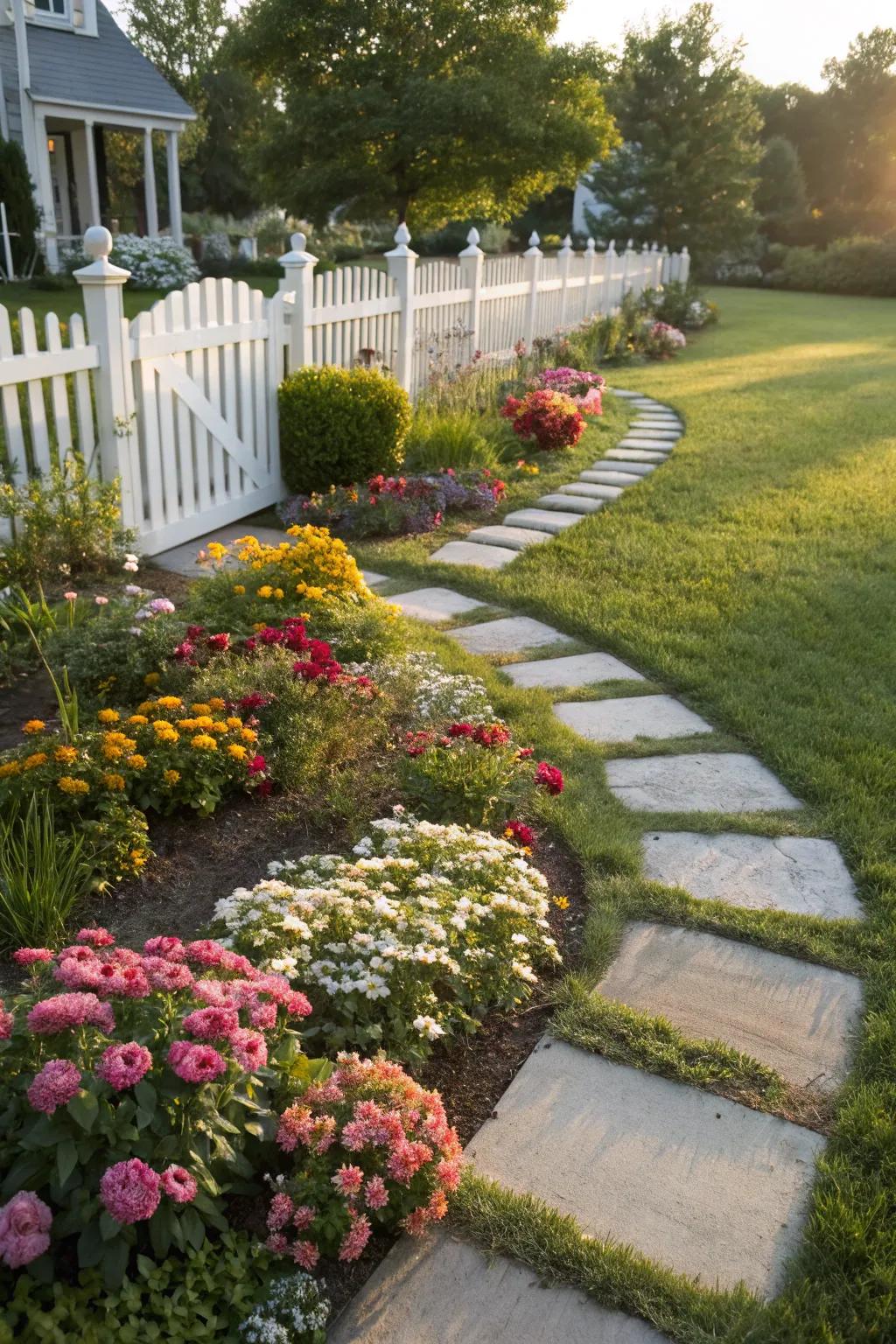
Have you ever noticed how a well-placed pathway can make even the smallest flower bed feel like a secret garden? It’s all about guiding not just feet but also the imagination. Pathways and stepping stones aren’t just practical—they create flow and define the story your front yard tells, one gentle curve at a time.
When I worked with the Thompsons designing their new yard, we debated between gravel and classic stone. Ultimately, we blended both, using stepping stones nestled into a narrow bed of pale gravel. The result? Their children now hop from stone to stone on the way to school—a little adventure built right into the landscape.
If you’re considering ways to add structure and intrigue to your flower beds, think about these pathway choices:
- Choose natural stone for a timeless, organic look that ages beautifully with your plants.
- Artfully arranged stepping stones can subtly encourage guests to explore, leaving grass undisturbed.
- Recycled brick paths add a pop of warm color and are perfect for cottage-inspired beds.
- Permeable pavers are a smart choice for eco-friendly drainage and low-maintenance upkeep.
A path doesn’t have to lead to a door; sometimes, the journey is the destination. Ask yourself: How do I want people—and myself—to move through this space? Define your borders, soften the lines with low ground cover, and enjoy your own personal garden stroll every day.
Try these:
15. Mulching Done Right
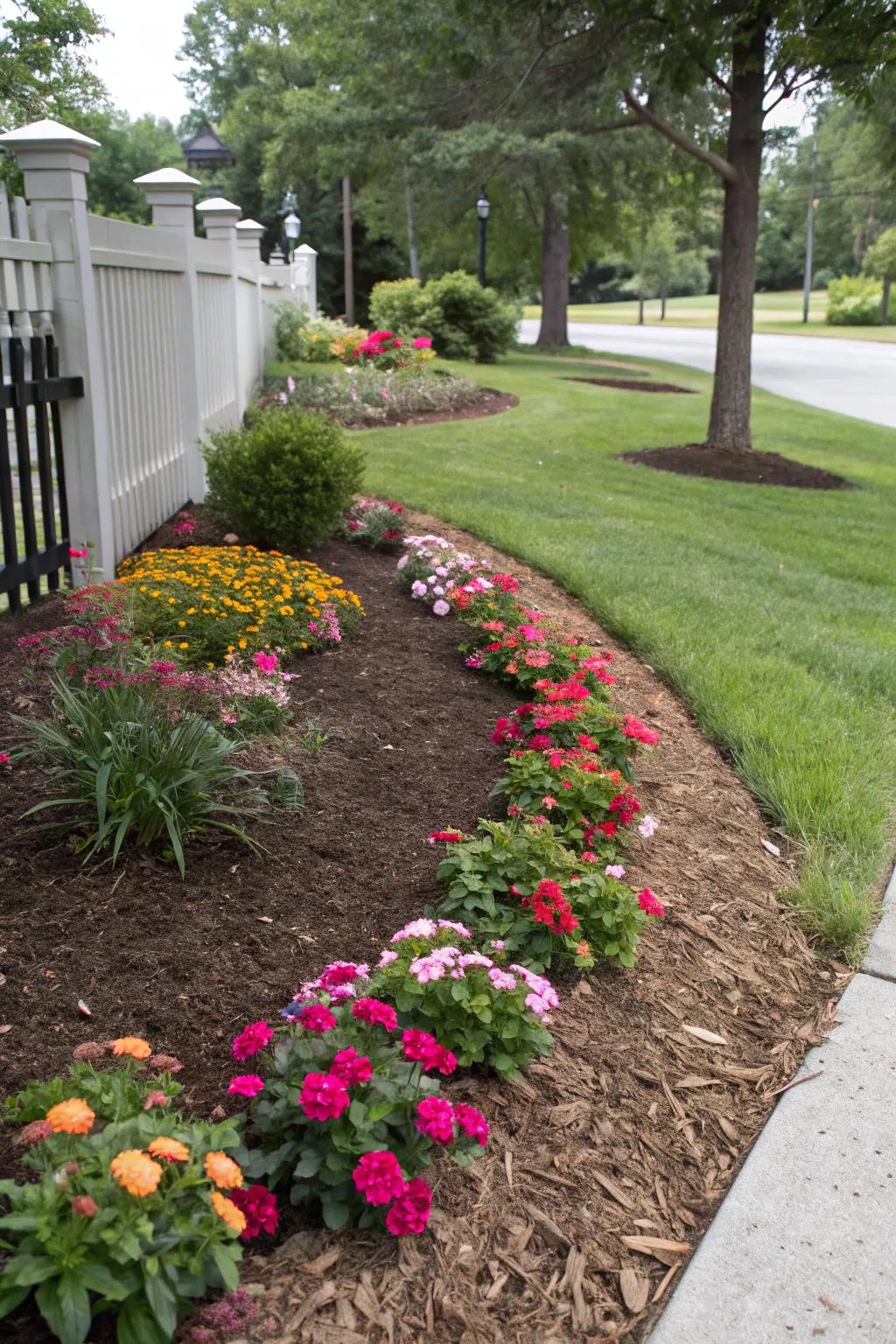
Adding a layer of mulch is one of the simplest ways to keep your front yard looking fresh, neat, and naturally lush. Not only does mulch act as a blanket for the soil, holding in precious moisture, but it also does the heavy lifting in keeping out pesky weeds. If you want your flower beds to stay tidy with minimal effort, I wholeheartedly recommend this step.
It’s amazing how a clean bed of mulch can transform the look of your garden.
Whether you choose shredded bark, chips, or something more decorative, remember to spread it evenly and avoid piling it against plant stems. Your flowers will thank you—and so will your busy schedule!
Check these products out:
16. Get Growing Upward: The Magic of Vertical Gardens
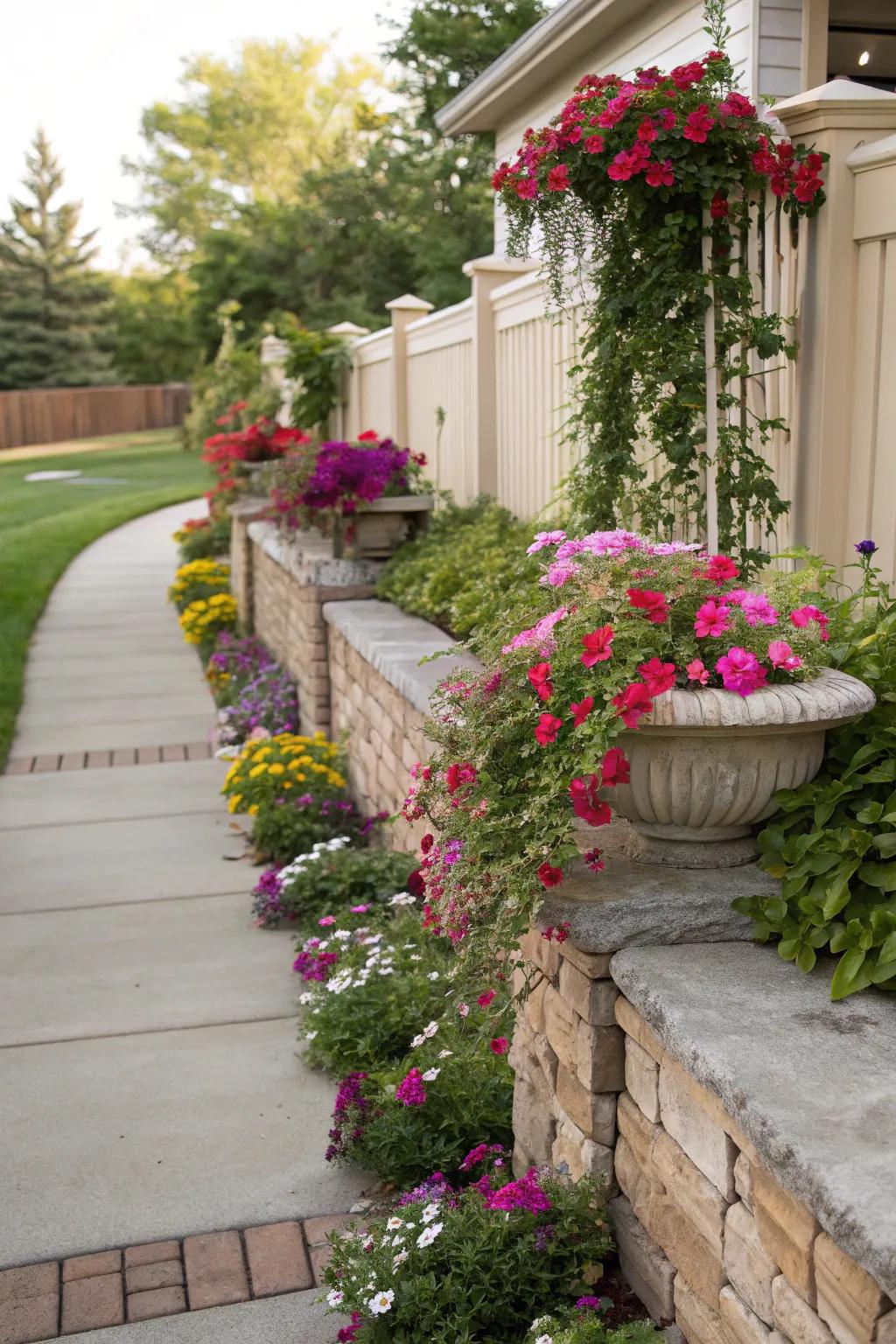
If you’ve ever felt like your front yard flower bed just doesn’t have enough room for all your favorite blooms, let me introduce you to vertical gardening—the secret trick for making even the tiniest spaces sing with color and life.
Picture this: a plain, unused wall bursting with vibrant flowers, or a simple fence transformed into a mini wildflower meadow. Vertical gardens create an instant sense of drama and height, drawing the eye up and adding visual interest even to the smallest nooks. I once helped my client Sarah, who only had a narrow urban balcony, bring her dream garden to life. By combining wall planters, a few sturdy trellises, and a cluster of hanging baskets, we gave her more green than she ever thought possible—without sacrificing precious floor space. The transformation was so inspiring that neighbors started asking how she did it!
Ready to give it a try? Here are three fun ways to incorporate vertical gardening into your flower bed:
- Attach modular wall planters to your fence or facade to create a living mural.
- Position a garden trellis behind compact beds for climbing flowers like clematis or sweet peas.
- Hang baskets at different heights for a lush, layered look that pops from the sidewalk.
Go on, ask yourself: could your garden use a touch of upward energy? Sometimes, the best way to add magic is to think above the ground.
Your outdoor space deserves a little surprise!

